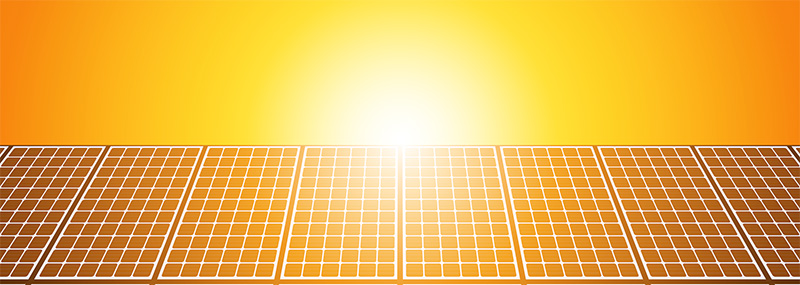More homeowners are harnessing the sun to power their homes, and new government subsidies are making the idea of solar panels more attractive. But can adding solar panels really save you money? The answer is often yes, especially over the long term.
We can help you figure out how long it may take you to recoup the cost of adding solar panels to your home, and if you’ll think getting solar panels will be worth it to you.
First, gather the information you need
Whether solar will be worth it for you depends first on how much the system will cost. Here’s what you need to know to get a rough estimate of how many panels you may need and how much it might cost.
How much energy you use: You’ll find your monthly usage on your electric bill, but you need to do a little work to figure out your average daily usage. You can either average your actual monthly bills or add up your usage to get an annual number, and then convert to average daily usage.
The average US household uses about 889 kilowatt-hours (kWh) per month, according to the US Energy Information Administration (EIA), but this varies widely by state. In 2022, EIA data showed Louisiana had the highest annual usage, at about 1,230 kWh per month, while Hawaii had the lowest, about 515 kWh per month. You’ll need to convert this into average daily usage by dividing the number by the average number of days per month, which works out to 30.42 days. For the average household, that works out to just under 30 kWh per day.
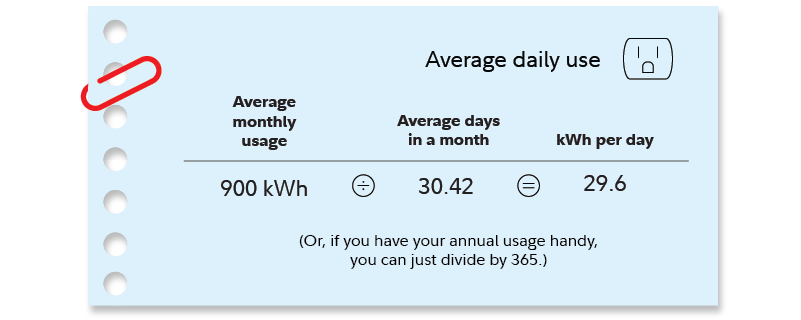
How much sun do you get? Of course, solar panels can’t produce power without sunlight, so the amount of “peak sun” your home gets is important to the calculation. The number of hours of peak sun ranges from less than 4 hours a day in the northwest to more than 7 hours in the desert southwest.
The average nationwide is about 4 hours, which is generally considered the minimum you need to make solar panels worthwhile. The National Renewable Energy Laboratory has a helpful map of peak sun hours.
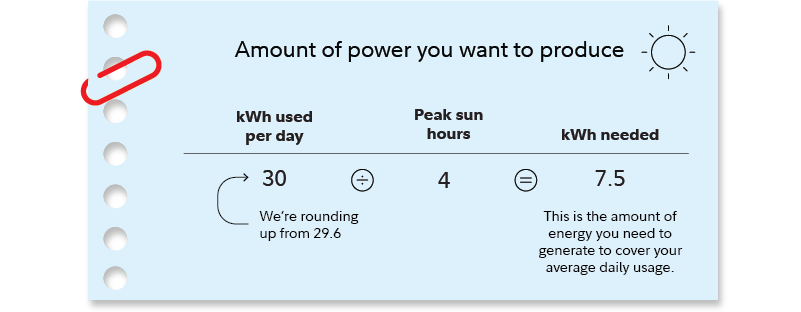
If you live in a sunnier climate, you might need a smaller system, but lots of other things come into play, including the position and angle of your roof.
Now you can take the amount of energy you want to produce and figure how many panels you might need.
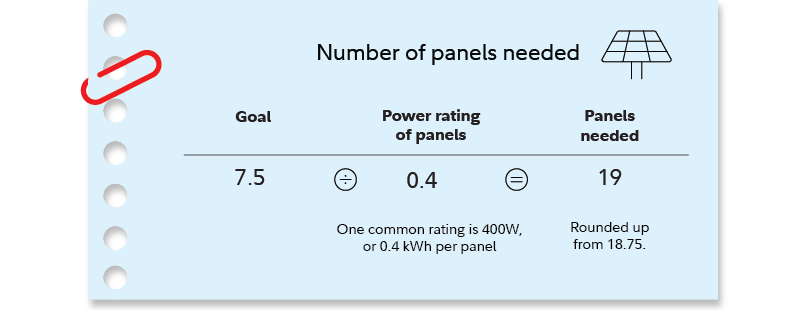
You can also use your generation goal to get a very rough estimate of cost. Solar costs are often estimated to fall between $3.20 and $5.20 per watt generated, according to research from the Lawrence Berkeley National Laboratory, a Department of Energy Office of Science laboratory. For a 7,500-watt system, the total estimated cost would range from $24,000 to $39,000, before the federal solar tax credit. The range is due to the type of panels as well as where you live and other factors.
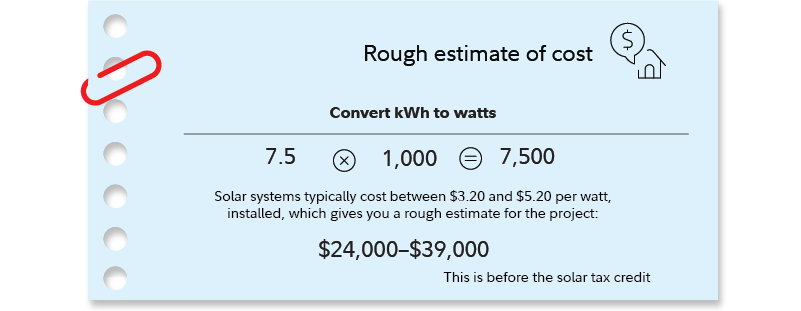
A solar energy professional can help you figure all of this out, but if you want to do some research before you engage a contractor, this is a good start.
Will it be worth it? First, you have to figure out how you’re going to pay for the system.
How to pay for solar panels
There are 3 basic ways to put solar panels on your home:
Buy the panels outright: Choose a solar company to install panels on your home’s roof. This is the most effective way of going solar, but it also has the highest upfront cost. You can pay the upfront cost in cash or using financing.
Solar lease: You enter a financial arrangement with a company that installs a solar panel system on your home but retains ownership of the system. You pay a fixed monthly amount to use the system and receive any electricity it produces.
Enter a Solar Power Purchase Agreement (PPA): A developer company arranges for the design, permitting, financing, and installation of a solar energy system on your property at little to no cost to you. The company will bill you for the electricity the panels generate, based on measured metering. Your monthly cost is generally lower than what’s charged by a utility company.
Overall, purchasing a system provides the greatest savings and flexibility, especially when it comes to selling your home, but it requires higher upfront investment.
There are pros and cons to each option:
| PROS | CONS | |
| Purchase |
|
|
| Solar lease |
|
|
| Solar Power Purchase Agreement |
|
|
Getting help to pay for solar
Adding solar panels to your home is a big investment, but there are incentives available to help if you want to purchase panels.
Federal tax breaks. The most valuable incentive available now is the federal Residential Clean Energy Credit. It is commonly known as the "solar tax credit." The credit equals 30% of the costs of new, qualified clean energy property for your home installed anytime from 2022 through 2032. For more details on this valuable tax credit, check out our complete guide to the solar tax credit.
For the hypothetical scenario above, the federal tax credit alone would bring the initial purchase price to $16,800–$25,900, down from $24,000–$39,000.
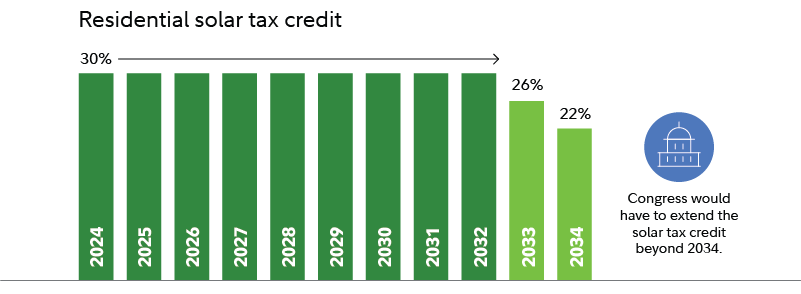
State and local incentives: Some states offer income tax credits, sales tax exemptions, and other incentives that can help offset the initial investment in solar panels. Check DSIRE, the Database of State Incentives for Renewables & Efficiency maintained by North Carolina State University, for incentives available in your state. You can also talk to your tax professional for information.
Net metering credits: Consumers who produce more energy with their solar panels than they use can typically transfer excess power to their electric company in exchange for a credit. This allows you to build a smaller system to cover your average energy use, not your highest use. Rules vary by electric company, though, and you may not be able to roll over those credits from year to year. In those cases, the electric company may pay you for any credits you haven’t used, but it will likely be a fraction of the retail price.
The bottom line: Is going solar worth it?
Now that you know how much solar panels may cost and ways to pay for them, that leads us to the big question: Is the investment worth it? The answer is often yes, especially if you are looking at solar panels as a long-term investment.
Start with your energy bill: The cost for the average energy user across the US ranges from a low of about 9 cents per kilowatt-hour (in Nebraska and North Dakota) to a high of 44 cents (Hawaii, a real outlier), according to the EIA. For an average household, that means a one-month electric bill ranging from $81 to $396. Clearly, Hawaii residents will recoup their investment a lot quicker than Nebraskans.
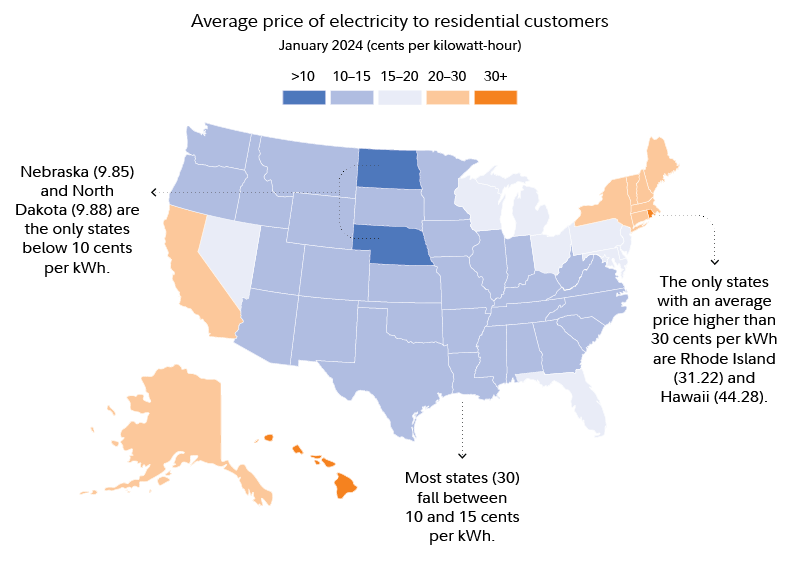
Let’s return to our hypothetical average household. They decided to purchase their panels at a cost of $30,000, or $21,000 after the solar tax credit. They finance $21,000 through a home equity loan at 9% interest.
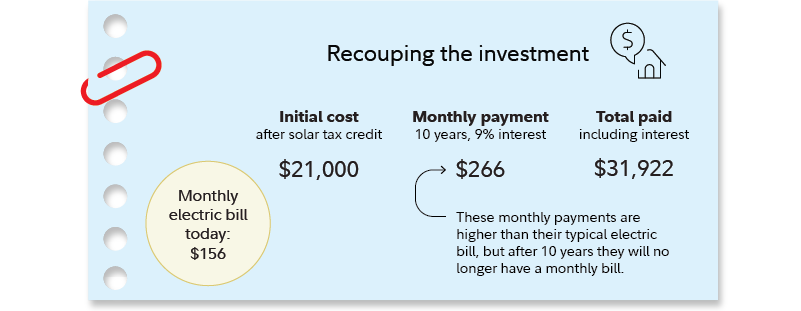
After 10 years, this homeowner’s solar panels would be paid off, and they would no longer have a monthly payment or an electric bill. The industry standard lifespan for solar panels is 25–30 years. That’s at least 15 years without an electric bill.
Consider what our hypothetical average household would pay for electricity over that span, and how it compares to the cost of panels:
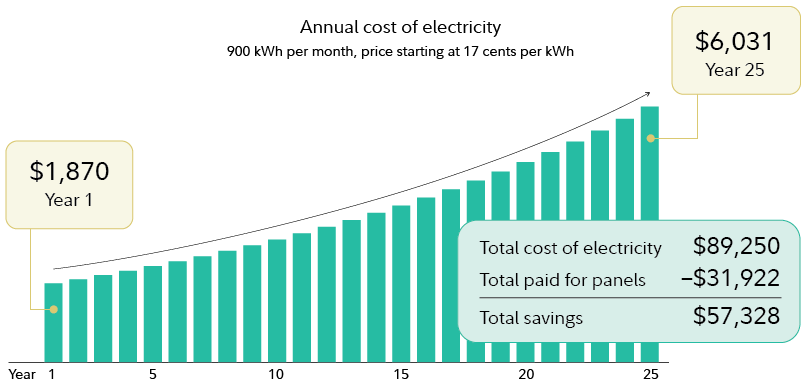
Bottom line: Our hypothetical homeowner is saving more than $57,000 over the course of 25 years. Worth it? For them, absolutely.
Going solar is a big decision. If you’re interested in solar and think the investment might be worth it for you, find a solar installer you can trust—preferably more than one—so you can explore further.


